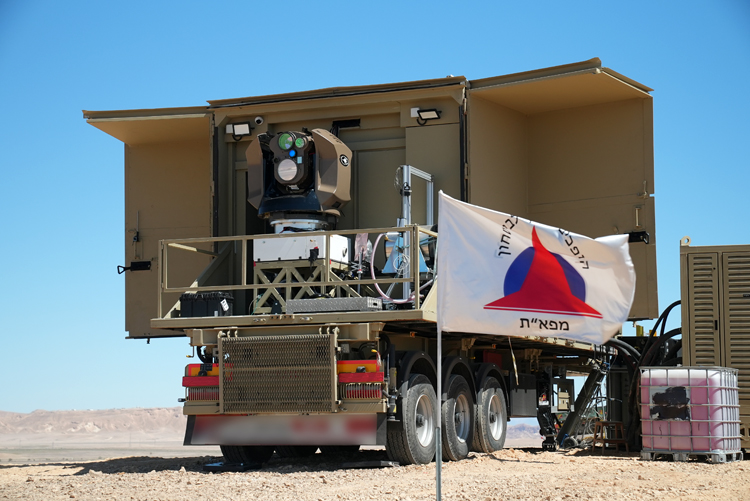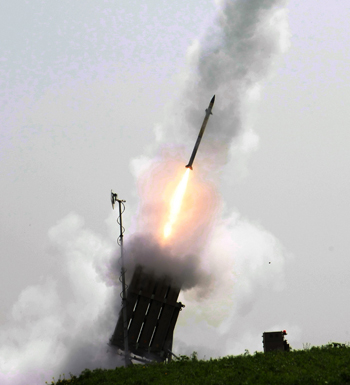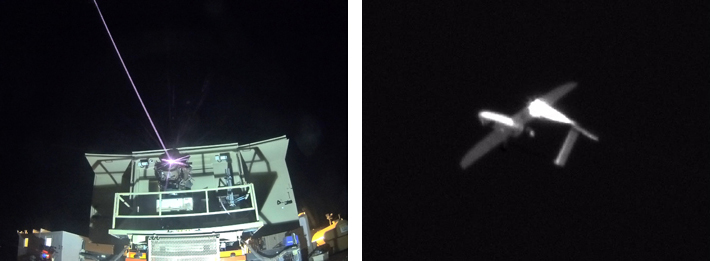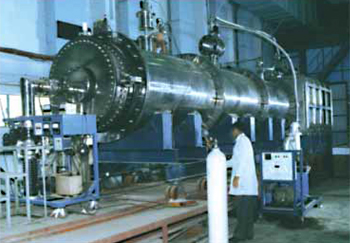INDIAN ARMED FORCES CHIEFS ON OUR RELENTLESS AND FOCUSED PUBLISHING EFFORTS

The insightful articles, inspiring narrations and analytical perspectives presented by the Editorial Team, establish an alluring connect with the reader. My compliments and best wishes to SP Guide Publications.

"Over the past 60 years, the growth of SP Guide Publications has mirrored the rising stature of Indian Navy. Its well-researched and informative magazines on Defence and Aerospace sector have served to shape an educated opinion of our military personnel, policy makers and the public alike. I wish SP's Publication team continued success, fair winds and following seas in all future endeavour!"

Since, its inception in 1964, SP Guide Publications has consistently demonstrated commitment to high-quality journalism in the aerospace and defence sectors, earning a well-deserved reputation as Asia's largest media house in this domain. I wish SP Guide Publications continued success in its pursuit of excellence.
- MoD initiates comprehensive review of Defence Acquisition Procedure 2020, pushes for defence reforms
- G7: The Swansong
- Kalinga Connect: South Asia to Polynesia
- Must Credit DRDO for Operation Sindoor, now what is next for defence R&D?
- The layered Air Defence systems that worked superbly, the key element of Operation Sindoor
- Operation Sindoor | Day 2 DGMOs Briefing
- Operation Sindoor: Resolute yet Restrained
Of Lasers and UAVs
There are good developments but the need is of speed, given the technological developments globally, particularly in China
 |
The Author is Former Director General of Information Systems and A Special Forces Veteran, Indian Army |

Israeli Prime Minister Naftali Bennet recently tweeted, "Israel has successfully tested the new "Iron Beam" laser interception system. This is the world's first energy-based weapons system that uses a laser to shoot down incoming UAVs, rockets & mortars at a cost of $3.50 per shot. It may sound like science fiction, but it's real."

Before the Iron Beam, Israel had launched the 'Iron Dome' mobile all-weather air defence system developed by Rafael Advanced Defence Systems and Israel Aerospace Industries with critical funding from the US. The system was designed to intercept and destroy short-range rockets and artillery shells from distances of 4 km to 70 km. First deployed on March 27, 2011, Iron Dome successfully intercepted a rocket launched from Gaza on April 7, 2011. In March 2012, Israeli media reported that Iron Dome had shot down 90 per cent of the rockets launched from Gaza.
In the second half of 2012, Israel said that it hoped to increase the range of Iron Dome's interceptions, from a maximum of 70 km to 250 km and make it more versatile so that it could intercept rockets coming from two directions simultaneously. However, there has been no further news about this. By late October 2014, the Iron Dome system had intercepted over 1,200 rockets. On May 19, 2021, Israeli officials said that of the over 3,150 rockets fired by Hamas over the past week, 90 per cent were shot down by Iron Dome. Media reports of June 3, 2021 reported that in the 11-day Israel-Hamas war, Hamas fired 4,340 rockets and that Iron Dome shot down 90 per cent of the rockets.
Iron Beam is a directed energy weapon (DEW) air defence system and deployed with the Israeli Defence Forces (IDF) on August 17, 2020, ostensibly for comprehensive trials and refinements as necessary.
Iron Beam is a directed energy weapon (DEW) air defence system, first unveiled at the Singapore air show on February 11, 2014. Rafael Advanced Defence Systems deployed it with the Israeli Defence Forces (IDF) on August 17, 2020, ostensibly for comprehensive trials and refinements as necessary. The system is designed to destroy short-range rockets, artillery, and mortar bombs. It has a range of up to 7 km, which is too close for the Iron Dome system to intercept projectiles effectively. Iron Beam can also intercept unmanned aerial vehicles (UAVs). Iron Beam can be used as stand-alone or as part of Israel's integrated air defence system in conjunction Iron Dome, David's Sling, Arrow 2 and Arrow 3 missile systems.

Iron Beam uses a fiber laser to destroy an airborne target within 4–5 seconds of firing. The threat is detected by a surveillance system and tracked by vehicle platforms in order to engage. The main benefits of using a DEW interceptor over conventional missile interceptors are lower costs per shot, unlimited number of firings, lower operational costs, and less manpower. There is also no interceptor debris to fall on the area being protected. In April 2022, the Israeli Ministry of Defence and Rafael announced the completion of successful interception experiments for a variety of threats, for the first time in the world, using a powerful laser system developed in Israel. It is estimated that within a year or two the system will be declared operational and as complementary to the Iron Dome.
India's Directionally Unrestricted Ray-Gun Array project 'Durga II', presently in the concept stage, is reportedly to equip the Indian Army with a 100-kilowatt, lightweight directed-energy system
Indian media reports of April 19, 2022, indicated that the Centre For High Energy Systems and Sciences of the Defence Research and Development Organisation (DRDO) has issued a Request For Information (RFI) to procure a Fixed Wing UAV as well as for its operation, field maintenance and repair that will be used for various field experimentations and demonstration of Directed Energy Weapons (DEW). The DRDO had sought $100 million from the Ministry of Defence (MoD) in 2021 to develop a 100 kilowatt (KW) system known as the Directionally Unrestricted Ray Gun Array that will be integrated with land, sea and air based platforms. According to the RFI, the fixed-wing UAV should have a wingspan of 2.5 metre and length of 1.5 metre powered by a 20cc IC engine. The RFI also says that the fixed wing UAV should be capable of takeoff from a short runway of 100 metres and must have an endurance of at least 30 minutes.

India's Directionally Unrestricted Ray-Gun Array project 'Durga II', presently in the concept stage, is reportedly to equip the Indian Army with a 100-kilowatt, lightweight directed-energy system, and a service. Also, India's KALI (Kilo Ampere Linear Injector) is a linear electron accelerator being developed by the DRDO and the Bhabha Atomic Research Centre (BARC) has DEW capabilities according to some analysts though there has been no official statement about this. The microwave-producing version of KALI was used for testing the vulnerability of the electronic systems of the Light Combat Aircraft (LCA) when under development. KALI also helped in designing electrostatic shields to harden the LCA and missiles from microwave attack by the enemy as well as protecting satellites against deadly Electromagnetic Impulses (EMI) generated by nuclear weapons and other cosmic disturbances.
DRDO has invited Academic partners to optimise the nozzle and air intake of Futuristic Unmanned Fighter Aircraft (FUFA)
Another media report of April 19, 2022, states that the DRDO has invited Academic partners to optimise the nozzle and air intake of Futuristic Unmanned Fighter Aircraft (FUFA). Nozzle and Air Intake being the two major components of any futuristic fighter aircraft's propulsion system, the design of intake and nozzle are critical for reducing Radar Cross Section (RCS) and Infra Red (IR) signature of airframe. The broader aim is to evaluate various configurations of the nozzle to optimise IR signature, lock-on range and integrated engine performance. The report goes on to say that the work package will be given to IIT Kanpur for study of intake and nozzle design. The industry partner chosen will get trained at IIT Kanpur and work package will be executed under the supervision of DRDO and IIT Kanpur.
These are good developments but the need is of speed, given the technological developments globally, particularly in China. Work on the KALI project began in 1989. The KALI-1000 accelerator was commissioned in late 2004 and subsequently KALI 5000 has also been developed. The development both the Durga II and KALI as directed energy weapon systems must be accelerated.





